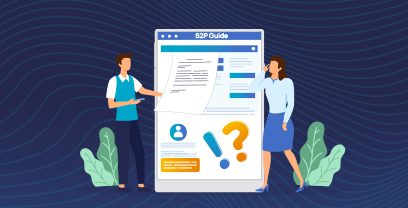Blog »
Get Ready for Success! 4 Critical Workstreams for Successful Procurement Implementation

Implementing a procurement application requires careful planning and execution, but combining it with a successful strategy can also ensure stakeholder buy-in, improve communications, support change management, reduce cost, and increase speed to market. Up front efforts to define roles and responsibilities, document requirements, integrate with other enterprise systems, and maximize the value of data will be rewarded in multiple forms well beyond the conclusion of the implementation.
We recommend leveraging these workstreams, based on Gartner’s 4 Workstreams for Successful Implementation of Any Procurement Application to maximize the impact of your next large-scale procurement implementation:
1. People: Engaging Stakeholders and Nurturing Change
Engaging stakeholders early in the implementation process is crucial for gaining their support and supporting the change management process. Procurement should identify key stakeholders, understand their needs, and communicate the benefits of any new technology before defining roles, responsibilities, and decision-making frameworks. Change management plans should anticipate potential resistance and facilitate adoption by nurturing a culture of collaboration and buy-in.
It is important to support this workstream through a team of key individuals:
Sponsor: A high-level executive who champions the procurement application implementation, the sponsor provides critical support, resources, and influence. The sponsor ensures the implementation is aligned with the organization’s strategic objectives and secures buy-in from other stakeholders.
Project Manager (PM): The project manager oversees the implementation process, coordinating activities, managing timelines, and ensuring that project objectives are met. This person acts as a bridge between procurement and other stakeholders, ensuring that everyone’s requirements are captured.
Technical Architect: This individual’s in-depth knowledge of technology infrastructure allows them to assess the compatibility and integration of the procurement application with other enterprise systems. They work closely with IT to address technical challenges, ensure seamless integration, and maintain data security and integrity.
Procurement Process Owner: The procurement process owner gives key input throughout the implementation process and collaborates with analysts and subject matter experts to blueprint existing processes and identify areas for improvement.
Procurement Analysts & Subject Matter Experts: These team members play a vital role in extracting and analyzing data, identifying opportunities for cost savings and process optimization. Their expertise informs implementation decision-making by ensuring that it is data-driven and reflects spend category-specific needs.
Implementation Partner: This team should be formed before the implementation kickoff, led and supported by analysts and consultants. The PM will work closely with the implementation partner to ensure clear understanding of responsibilities and ownership.
Everyone is a contributor to change management
A successful implementation engages everyone in the change management effort. Taking a collaborative approach to change management ensures that the procurement application is embraced by all stakeholders, leading to better adoption, improved efficiency, and the successful digitization of all relevant processes.
2. Process: Blueprints for Success
This process workstream focuses on blueprinting existing processes, policies, and metrics. The blueprints serve as a foundation for change management, documenting current processes in an “as-is” form and gathering requirements to define the desired “to-be” state.
Evaluating each step of the procurement process, identifying pain points, and seeking opportunities for improvement should also help to streamline workflows, eliminate bottlenecks, and establish clear guidelines for future operations.
3. Technology: Maximizing Capability Integration
Assess the current technology infrastructure to determine how to integrate internal capabilities with external ones, considering scalability, compatibility, security, and data governance.
The technology workstream identifies potential integration challenges and develops strategies to overcome them, selecting the procurement application best aligned with the organization’s needs and long-term goals.
4. Data: Extracting, Preparing, and Enriching Insights
Data is the lifeblood of procurement processes, making this workstream essential to identify insights across all applicable processes and focus on extracting, preparing, and enriching the data.
Data cleansing techniques can eliminate inconsistencies, and the data workstream should establish governance protocols to ensure data integrity and develop effective management practices. With reliable and actionable data, this workstream can help identify trends and motivate informed decisions.
A Successful Implementation
Having a strong foundation and blueprint can help procurement overcome common challenges that are likely to occur when implementing a procurement application. These challenges include stakeholder resistance, lack of clear project objectives, execution roadblocks, poor adoption, and risks to governance.
By using these 4 core workstreams to build an implementation plan, procurement can create an interconnected network of team members, functions, and resources that all operate synchronously to enhance efficiency, cost savings, and compliance through the ups and downs of a change management environment.
Download Today! 2023 Strategic Roadmap for Source-to-Pay Technology

Michel Girerd
Global Head of Services Advisory & Value Engineering
Michel, Global Head of Services Advisory & Value Engineering, joined Ivalua with over 20 years of experience in the software, procurement, and financial services industries. With a proven track record in leading cross-functional teams, driving sales, and implementing value-driven programs, he delivers best-in-class solutions for a diverse range of clientele. His expertise spans services advisory, professional services, enterprise software sales, value engineering, eSourcing, eProcurement, and change management. At Ivalua, Michel drives global services sales, go-to-market strategy, technology roadmaps, and overall procurement transformation.
You may also connect with Michel on LinkedIn




